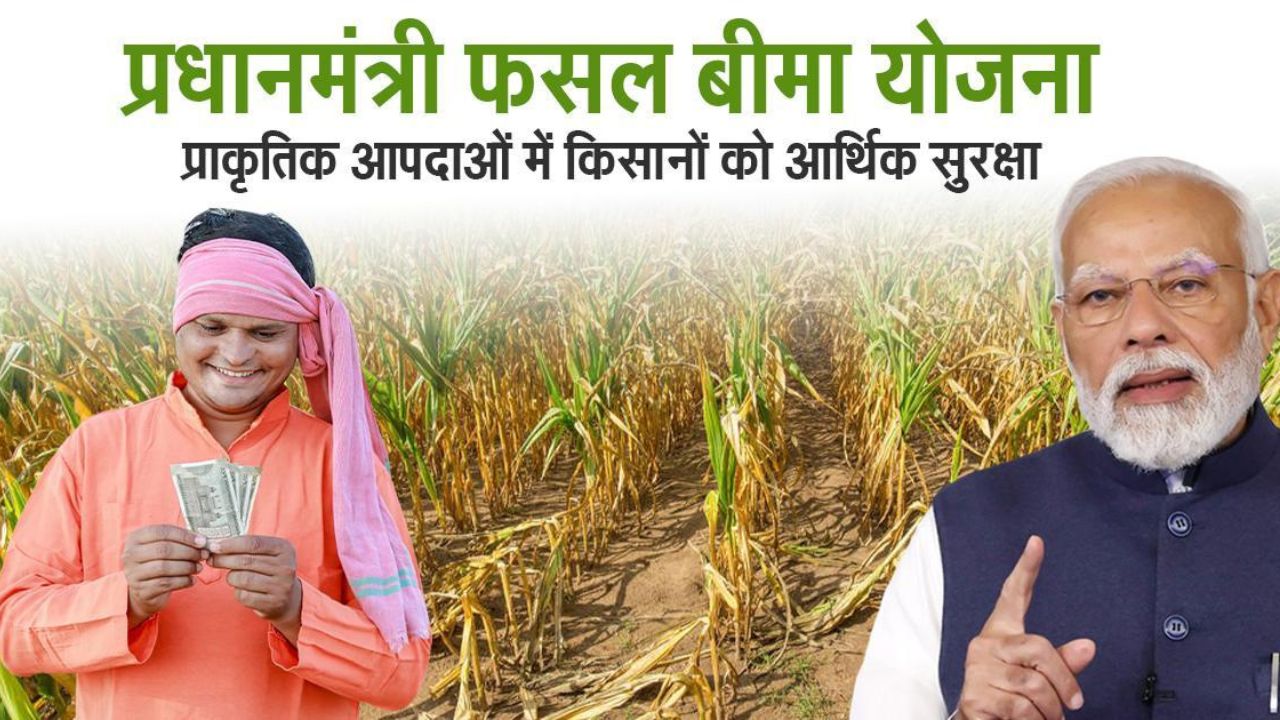A farmer’s life is a constant battle against uncertainty. They can toil day and night, use the best seeds, and follow perfect techniques, but their entire livelihood remains at the mercy of the weather. A sudden drought, an unexpected hailstorm, a flash flood, or a pest attack can wipe out an entire season’s hard work in a matter of hours. This immense risk has trapped generations of Indian farmers in a cycle of debt and distress.
To address this core vulnerability, the government launched the Pradhan Mantri Fasal Bima Yojana (PMFBY) in 2016. Think of it as a comprehensive protective shield 🛡️ for farmers. It’s a crop insurance scheme designed to provide financial support and stability when they need it most—right after a crop failure.
What is PMFBY? A Quick Overview
- Full Name: Pradhan Mantri Fasal Bima Yojana
- Launched: 2016 (replacing older, less effective schemes)
- Ministry: Ministry of Agriculture & Farmers Welfare
- Goal: To provide a comprehensive insurance solution to farmers, protecting them from financial losses due to unforeseen events and stabilizing their income.
What Makes PMFBY Different? Key Features
PMFBY was designed to be a massive improvement over previous insurance schemes, with a clear focus on being farmer-friendly.
Super Low Premiums for Farmers
This is the scheme’s biggest and most attractive feature. Farmers have to pay a very low, uniform premium, making it highly affordable. The rates are fixed:
- 2% of the sum insured for all Kharif (summer monsoon) crops.
- 1.5% of the sum insured for all Rabi (winter) crops.
- 5% of the sum insured for annual commercial and horticultural crops.
Government Pays the Rest
The actual insurance premium is much higher than what the farmer pays. The remaining balance is shared equally by the Central and State governments. This heavy subsidy is what makes the scheme viable and accessible for millions.
It Covers Almost Everything
The risk coverage under PMFBY is one of the most comprehensive ever offered. It protects farmers at every stage of the crop cycle:
- Prevented Sowing/Planting Risk: If a farmer is unable to plant their crop due to a lack of rainfall or adverse weather, they are still eligible for a claim.
- Standing Crop (Sowing to Harvesting): This covers losses to the standing crop due to non-preventable risks like drought, dry spells, floods, pests, diseases, landslides, and lightning.
- Post-Harvest Losses: This is a crucial feature. The insurance provides coverage for up to two weeks after harvesting for crops that are left drying in the field and are damaged by events like cyclones or unseasonal rain.
- Localized Calamities: It also covers losses to individual farms caused by localized events like hailstorms, inundation, and landslides.
Use of Technology
To make the process faster and more transparent, PMFBY relies heavily on modern technology.
- Smartphones are used to capture images of Crop Cutting Experiments (CCEs) in real-time.
- Satellite imagery and drones are used for quicker and more accurate assessment of crop damage, especially in widespread calamities.
- A central National Crop Insurance Portal acts as a one-stop-shop for enrollment and grievance redressal.
How Does a Farmer Get Enrolled?
The process is fairly simple.
- Farmers who take agricultural loans from banks (loanee farmers) can be enrolled by their bank branch. Since 2020, enrollment has been made voluntary for all farmers.
- Farmers who do not take loans (non-loanee farmers) can enroll themselves through the nearest Common Service Center (CSC), a bank branch, or an authorized insurance agent.
- They need to provide basic documents like their land records, bank passbook, and an Aadhaar card.
The Human T-ouch: A Timely Lifeline
Rakesh, a soybean farmer in Madhya Pradesh, had invested all his savings into his 4-acre farm. The crop was healthy and he was expecting a bumper harvest. A week before he was scheduled to harvest, a severe hailstorm lashed his village. In just 20 minutes, his entire crop was flattened and destroyed. He was devastated, staring at a year of debt and financial ruin.
Thankfully, on the advice of a fellow farmer, Rakesh had insured his crop under PMFBY by paying a small premium of about ₹2,000. After the hailstorm, he immediately informed the authorities. An assessment team, using smartphones to geo-tag pictures of his damaged field, surveyed the loss. Within 45 days, a claim amount of over ₹80,000 was credited directly to his Jan Dhan bank account. The money was a lifeline. It allowed him to clear his dues for seeds and fertilizers and gave him the capital and the courage to prepare for the next sowing season. PMFBY didn’t just compensate for his loss; it restored his hope.
Challenges on the Ground
While the scheme is well-intentioned, its implementation faces hurdles.
- Delayed Claim Settlement: This is the most significant challenge. Delays by State Governments in paying their share of the premium subsidy to the insurance companies often lead to cascading delays in the settlement of claims to farmers.
- Inaccurate Loss Assessment: While technology helps, accurately assessing the extent of damage, especially for localized calamities, can still be a complex and contentious process.
- Low Awareness: In many remote areas, awareness about the scheme’s features, benefits, and the voluntary nature of enrollment is still low.
Conclusion
The Pradhan Mantri Fasal Bima Yojana is a critical safety net for India’s agricultural sector. It aims to transform farming from a high-risk gamble into a more stable and predictable enterprise. By providing an affordable and comprehensive insurance shield, the scheme gives farmers the confidence to invest in their land, adopt better technologies, and withstand the shocks of nature. While streamlining the claim settlement process is a key area for improvement, PMFBY stands as a vital and powerful tool in the effort to secure farmers’ livelihoods and ensure the nation’s food security.
